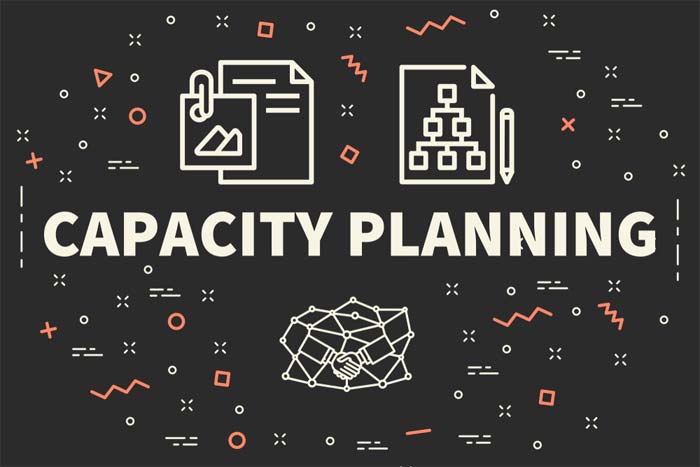Begins here rough cut capacity planning, Production managers face the challenging task of overseeing a product’s manufacturing process from start to finish. It can be stressful and overwhelming at times because of all the moving parts that go into manufacturing and distribution.
Because of all the details that go into production planning, it’s vital for production management teams to be equipped with the proper planning tools. One such tool is rough cut capacity planning. Although it’s a simple concept, it can be an extremely useful tool that can boost productivity and prevent long delays.
Rough Cut Capacity Planning Definition

Rough cut capacity planning, often referred to as RCCP, is a crucial aspect of supply chain management. This process involves using manufacturing capacity planning tools to analyze and predict the production capacity required to meet demand. Rough cut planning helps businesses identify any potential capacity constraints and allows them to make necessary adjustments to ensure smooth operations. Many companies use rough cut capacity planning excel spreadsheets to organize and analyze data efficiently.
RCCP, or rough cut capacity planning in English, is essential for ensuring that manufacturing processes run smoothly and efficiently. By using rough-cut capacity planning, businesses can anticipate potential bottlenecks in production and make the necessary adjustments to prevent delays. Manufacturing capacity planning excel tools are commonly used to analyze data and make informed decisions about capacity requirements.
In conclusion, rough cut capacity planning is a vital component of supply chain management that helps businesses optimize their production processes. By utilizing manufacturing capacity planning tools and rough cut planning techniques, companies can effectively manage their resources and meet customer demand in a timely manner.
Simply put, rough cut capacity planning (RCCP) is a type of production capacity planning tool that helps companies determine if they have the capacity to execute a master production schedule (MPS). In general, the capacity planning process can be broken down into two terms.
Short-term
Short-term capacity planning ranges between 0-3 months. It is often used as an immediate means of addressing unexpected shifts in demand as quickly and economically as possible. It can include providing overtime to employees, rearranging and staggering shifts, or hiring skilled contract workers.
Long-term
Long-term capacity planning can range between 1-5 years. It is a strategic approach that is often used when a short-term capacity planning strategy is no longer effective.
Long-term capacity planning will often look at the whole production capacity system and make larger changes or modifications that affect the whole system, rather than just an isolated area.
For example, a short-term capacity plan might address a bottleneck by having employees work overtime. In contrast, a long-term capacity plan might consider constructing a more efficient factory route or installing more capital equipment.
RCCP is a long-term capacity planning tool. It specifically focuses on key resources and balances these resources with current demands over a defined period of time. It also checks to see if a manufacturer’s available critical resources can support the MPS. Examples of critical resources would be labor, machinery, and warehouses.
RCCP often streamlines planning because the focus is only on key resources rather than every single detail of a production plan.
There are two approaches to RCCP:
- Routing-based RCCP. This approach looks at individual resources to show how required capacity compares to available capacity. Production capacity is measured by hours per week and per resource.
- Rate-based RCCP. This approach focuses on production lines rather than specific resources. Capacity is measured by production rate per line.
The goal of RCCP is to determine if a system has sufficient capacity to meet demand.
Rough Cut Capacity Planning Example

RCCP inputs three components to generate a production plan comparing the required and available capacity. These three components are demand, available capacity, and workload.
For example, if a bottling facility is using RCCP to determine how much bottled water should be produced, the production manager would first look at existing data to determine an estimated demand for bottled water.
Then, the production manager would determine the available resources and workload that is required to produce bottled water. These three inputs would generate an estimated amount of bottled water that the facility can and should produce.
With these steps taken through RCCP, the production manager is able to see a clearer relationship between supply and demand. From there, the production manager can develop a well-informed production plan.
Benefits of Rough Cut Capacity Planning

Production managers can experience several benefits from using RCCP.
Cutting Costs
Since RCCP clearly identifies available capacity, it is easier to determine if modifications or additional support is necessary. As a result, manufacturers can avoid initiating and investing in unnecessary training projects and machinery.
Improved Capacity
There is often more capacity than required capacity when using RCCP. Capacity can be improved by training employees, adding equipment, and optimizing how the production system operates.
RCCP helps production managers determine how many training projects should be executed at any given time by determining how much capacity is truly available through resources.
From there, the production manager can accurately determine the amount of inventory management to accumulate and how much demand needs to be met at any given time. This creates better planning and scheduling to help manufacturing companies save time, money, and resources.
Timely manufacturing

RCCP helps production managers determine the best time to execute training projects. Since there is a clear relationship between demand and available capacity, RCCP can identify periods of the year when manufacturing companies have more resources.
For example, a manufacturer might be able to provide additional support for training during a holiday season where demand is usually high.
If the company uses RCCP, it will be able to see potential periods that have many resources available without having to use excess resources or hamper productivity for several weeks or months from an extra project.
Overall, Rough Cut Capacity Planning allows manufacturers to focus on key resources rather than meeting individual demands in order to create better planning and scheduling processes. It also helps identify with higher resources so manufacturers can avoid excess capacity planning or training that is not necessary.
Reduced Waste

RCCP allows manufacturers to plan appropriately so that they are not wasting raw materials or products. A production manager will have a better understanding of how much product should be produced so there is less waste in the process.
Moreover, it facilitates better planning by telling managers when training projects can be executed with minimal impact on productivity.
Overall, RCCP helps eliminate waste in the production process. It also helps identify periods where training projects are not necessary so resources are preserved during those times to avoid interruptions or delays.
Making Better Decisions

The overall goal of RCCP is to help production managers make better decisions about how much supply should accompany demand. This ultimately enables them to understand how demand should influence decision-making for other business processes such as pricing and promotions.
Simplify Project Team Management
The focus on key resources helps with identifying and prioritizing tasks and workflow. Different members of a project management team can easily work together without getting lost in details and misunderstanding work priorities.
Boost Efficiency
Lastly, RCCP can boost efficiency by improving resource management. Since RCCP clearly lists available capacity planning and resources, the production demand planning process is flexible. This can also help production managers quickly locate and resolve problem areas. As a result, the manufacturing process runs more efficiently with a decrease in lead times.
How to Access Rough Cut Capacity Planning

RCCP is a commonly used supply chain planning tool, and most production managers use it through capacity requirement planning software or Microsoft Excel.
Software
First, you can look into various software that is specifically designed for RCCP. Capacity requirement planning software is convenient because it often has a user-friendly interface. It is also often accompanied by customer support.
This means that you can work with a specialist to make sure that you are getting the most out of the program. You can also contact a support line to troubleshoot any technical difficulties.
Excel
You can also do rough cut capacity planning with Excel. Excel has the ability to compute capacity planning. Some of its capabilities include adding vacation and overtime, addressing overutilization and under-utilization, and scheduling production line dates. There are pre-made templates readily available, or you can build your own RCCP spreadsheet.
When to use Rough Cut Capacity Planning?

A product manager should use RCCP if they are experiencing capacity constraints.
Capacity is defined as the maximum output that can be achieved with specific resources at any given time. If production demand exceeds capacity, it could lead to bottlenecks in meeting demand and prevent a company from meeting its objectives.
In addition, RCCP is used when there are changes in customer demands or market conditions since these circumstances can affect available capacities for meeting present or future demand.
Rough cut capacity planning is usually employed by businesses that do not have a formal capacity management system in place. This often occurs with smaller manufacturers who lack the time and expertise for detailed calculations of future plant production capability and use rough cut capacity planning instead.
Rough Cut Capacity Planning and the Master Production Schedule

The relationship between rough cut capacity planning and the master production schedule is that RCCP can be used to determine if critical resources are available to support the MPS.
RCCP checks to make sure that you have the capacity planning to meet the demands of your MPS. Proper use of RCCP will help production managers arrange and modify their MPS accordingly.
A solid MPS is necessary for production managers because it will determine if a manufacturer is producing the appropriate quantity of specific products over a certain period of time. A reliable MPS can be reinforced by RCCP.
As you can see, rough cut capacity planning can be a powerful tool. It offers an efficient and effective view of a production line process, and it interacts easily and effectively with a master production schedule. It’s an especially great match for manufacturers that have a make-to-stock process and a fairly standard workflow.
Solid long-term capacity planning is absolutely necessary for a business’ vitality because it can greatly impact efficiency and proactivity towards growth. Make sure to review and evaluate your current long-term capacity planning strategy and see if your business can benefit from RCCP.